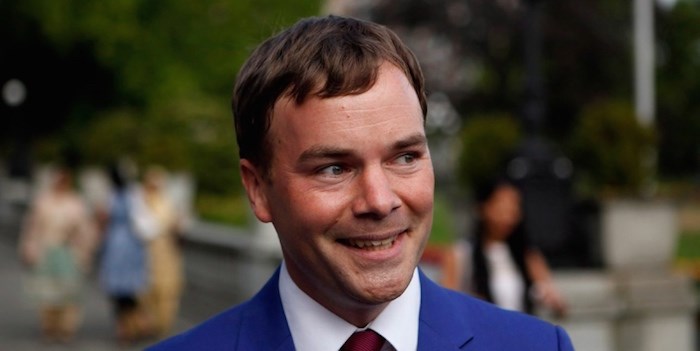Blindsided by an automatic jump in allowable rent increases, a group of MLAs rushed in Monday to try to undo the damage the increase did to their work on the issue.
The NDP government struck a task force last spring to improve security for renters and landlords. The three MLAs — New Democrats Spencer Chandra Herbert and Ronna Rae Leonard, plus Green MLA Adam Olsen — conducted hearings and were working on a big report on rental housing.
 NDP MLA Spencer Chandra Herbert. Photograph By CHAD HIPOLITO, THE CANADIAN PRESS
NDP MLA Spencer Chandra Herbert. Photograph By CHAD HIPOLITO, THE CANADIAN PRESS
They left the impression the provincial government was listening to the complaints of renters and landlords alike and was bent on making life better for both camps.
That perception evaporated two weeks ago, as far as many tenants were concerned. The provincial formula that produces the annual rent-increase limit — inflation rate plus two per cent — spit out next year’s cap. It’s 4.5 per cent, the highest since 2004, attributed to a creeping increase in the inflation rate.
It comes after an NDP-approved four per cent hike allowed for the current calendar year.
For a government keen to show it cares about people, the new higher limit comes at the worst possible time. After making a series of grand housing promises and sending out a rental task force to reassure people help is on the way, the NDP is presiding over the highest rent increase in 15 years.
Even worse, it arrives right after the NDP parked the one promise that was designed to ease rent hikes directly. The $400-a-year rebate to all renters vanished from the party’s to-do list right after it took power.
And, of course, the increase lands at a time of near-zero vacancy rates, sky-high rents and sustained anxiety about housing in general and rental housing in particular.
The task force has spent months listening to renters express concerns about all that and more.
No wonder the members rushed out an objection on Monday to the formula-driven increase.
The MLAs are asking government to cancel the 4.5 per cent limit for next year and adopt a new system. It would set the new limit just at the inflation rate — currently 2.5 per cent — and require landlords to prove they are spending money improving their rental units if they want to increase rent any more than that.
It sounds as if the B.C. cabinet is receptive to the idea, even though there are a lot of details to be worked out.
The trio was told a response will be coming within the week. Chandra Herbert told reporters that Premier John Horgan and Municipal Affairs Minister Selina Robinson asked for recommendations as soon as possible. He expects they’ll be discussing the matter this week.
It’s unlikely backbench MLAs would have pitched this blindly without determining how receptive the government is to the concept.
The 4.5 per cent shocker produced by the Residential Tenancy Branch is the operative number for 2019, meaning landlords could raise rents by that maximum amount.
If the government accepts the task-force idea, the maximum would be 2.5 per cent, with an asterisk.
Landlords could apply to the branch for an additional rent hike above the inflation rate. It would be approved where renovations and repairs have been done. No limit was mentioned for the additional hike, but it would be “modest,” the MLAs said.
It sounds like a paperwork-heavy process that would swamp the office with more work. Every landlord in B.C. doing renovations would have to submit receipts. But there are similar processes in Manitoba and Ontario.
Herbert said he’s talked to property firms that operate in both B.C. and Ontario and was told they could live with the Ontario model his task force is recommending here.
The task force has found a deep divide between landlords and renters — no surprise. Changing the formula would be a compromise on the perennial argument about where to set rent hike caps.
There was a certain amount of making up to tenants at Monday’s announcement. Herbert acknowledged “huge concern” about the 4.5 per cent limit and it was what prompted them to recommend re-doing the approach and reducing the rent hike maximum.
Horgan and Robinson likely heard the same concern.

.jpg;w=120;h=80;mode=crop)
